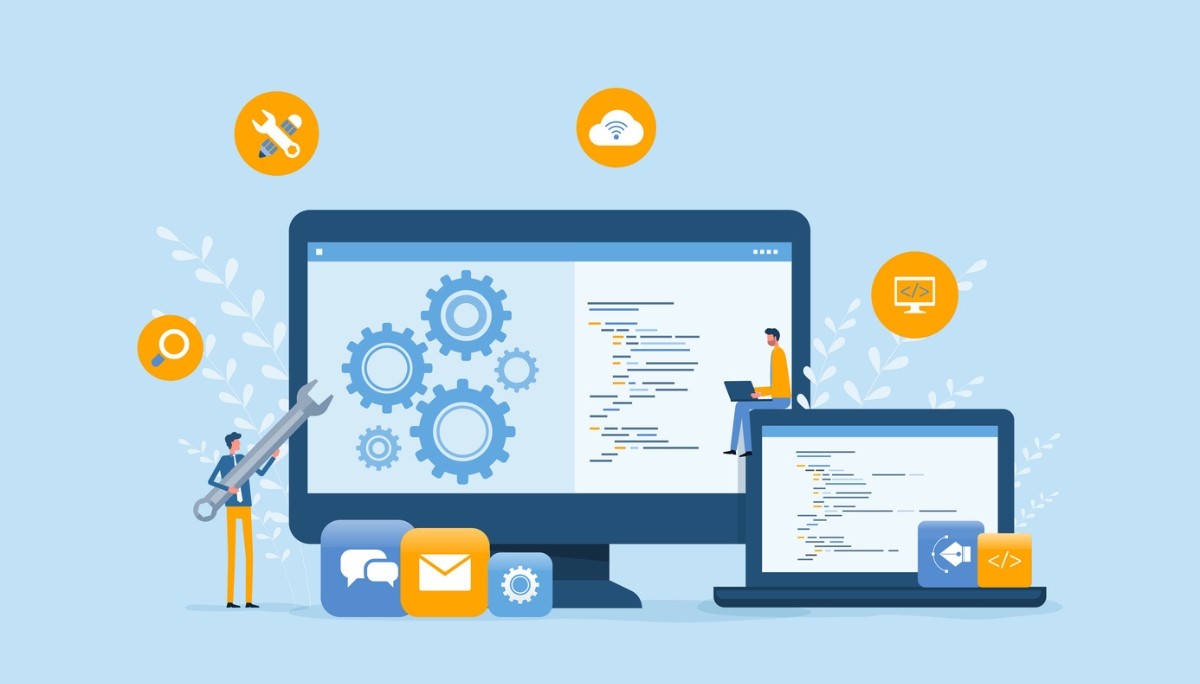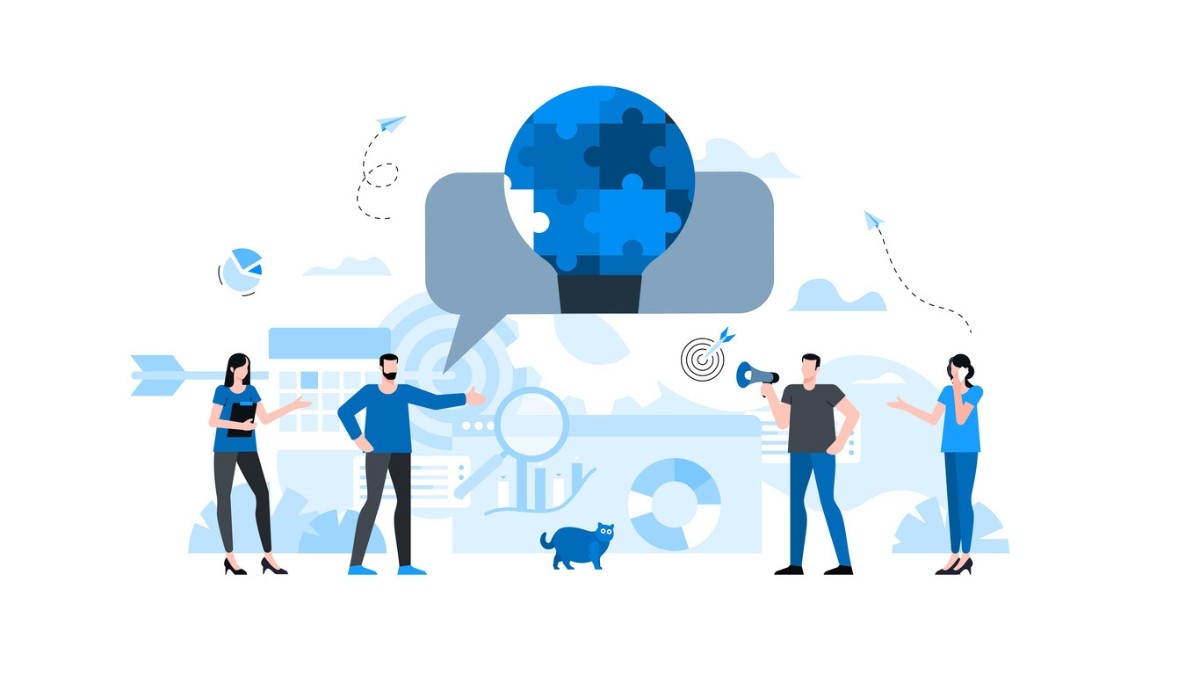Everyday Software Applications and How Software Development Works
By
Samantha Cox
•
Jul 8, 2025
We interact with software applications all the time, whether it’s sending emails, managing online banking, or editing photos. If you’ve ever wondered what everyday software looks like behind the scenes, this guide breaks it down with familiar examples that help make daily life more efficient and productive. For recruiters and engineering teams, tools like Fonzi AI can help identify talent that understands the real-world impact of these applications, connecting you with professionals who build the software we rely on every day.
Key Takeaways
Application software enhances user productivity by assisting in specific tasks, distinguishing it from system software that manages hardware resources.
Common categories of application software include word processing, spreadsheets, web browsers, multimedia tools, and communication applications, each tailored for various user needs.
Specialized business application software, like CRM, project management, and ERP, plays a crucial role in improving operational efficiency and decision-making in organizations.
Understanding Application Software

Application software, also known as end-user programs or productivity programs, is designed to assist users in performing specific tasks rather than managing the computer itself. These on-premise application software programs are designed to develop application software with the primary goal of enhancing productivity and efficiency, allowing users to perform tasks such as document creation, data analysis, and communication effortlessly through various computer programs.
Application software is distinct from system software, which includes operating systems that manage the hardware and software resources of a computer system. While system software provides a platform for application software to run, the latter focuses on helping users perform specific tasks. Examples of application software examples include word processing software, spreadsheet software, and multimedia software, each tailored to meet particular user needs.
Choosing the right application software can significantly improve operations, leading to greater efficiency and productivity. This software can be classified into horizontal applications, which are general-purpose and serve a wide range of users, and vertical applications, which are designed for niche markets. Regardless of the type, application software is integral to modern computing, providing essential functions that streamline both personal and professional activities.
Everyday Examples of Application Software

Daily use of various application software assists us in both personal and professional tasks. These can range from word processors like Microsoft Word to multimedia players like VLC Player. This type of application software can be broadly categorized into several types, each serving distinct purposes and enhancing different aspects of our digital lives.
Popular examples include Microsoft Office, which encompasses multiple types of application software such as word processing, spreadsheet, and Microsoft PowerPoint presentation software. Another notable mention is Adobe Photoshop, a graphics software used extensively for image editing. The availability of both proprietary software and open-source software and computer software gives users the flexibility to choose solutions that best fit their needs.
We will explore specific types of application software, including:
Word processing
Spreadsheet
Web browsers
Multimedia
Communication tools Each of these computer devices plays a crucial role in simplifying tasks, improving productivity, and enhancing our overall digital experience.
Word Processing Software
Word processing tools are vital for creating, editing, and saving documents. It allows users to format and manipulate text, making it a fundamental tool for a wide range of tasks. Popular examples include Microsoft Word, Google Docs, and Apple Pages, each offering unique features to enhance document creation and editing.
Essential features include:
Spell check
Grammar review
Text formatting
Integration with other tools
These functionalities make it easier for users to produce professional-quality documents, whether for personal, academic, or professional use.
Spreadsheet Software
Spreadsheet tools are crucial for organizing data, performing mathematical calculations, and conducting statistical analysis. Microsoft Excel is one of the most popular spreadsheet applications. Google Sheets is also widely used for similar purposes. These tools allow users to perform complex calculations using formulas, create charts, and visualize data effectively.
The use of cells to organize data in a tabular format, along with features for formula application and chart creation, makes spreadsheet software a powerful tool for both personal and professional data management. These capabilities are crucial for tasks such as budgeting, financial analysis, and academic research.
Web Browsers
Web browsers serve as gateways to the internet, enabling effortless information search and gathering. Common examples include Google Chrome, Mozilla Firefox, and Safari, each offering unique features to enhance the browsing experience.
Functionalities like tabbed browsing, bookmarks, and private browsing modes make web browsers indispensable tools for accessing and navigating the vast expanse of the internet. Whether for research, entertainment, or communication, web browsers play a pivotal role in our daily digital interactions.
Multimedia Software
Multimedia tools are crafted for creating, modifying, and playing audio and video content. Popular examples include:
VLC Media Player
Adobe Photoshop
Adobe Premiere Pro multimedia application software. These tools are essential for various tasks, from watching videos to editing images and producing professional-quality videos.
Image editing software like Adobe Photoshop offers features such as layers and filters, enabling users to manipulate images with precision. Similarly, video editing software like Adobe Premiere Pro allows users to create and edit videos, while audio editing tools like Audacity provide functionalities for recording and editing audio.
Communication Tools
Communication tools are crucial for facilitating real-time interactions, particularly as remote work becomes more common. Video conferencing applications like Zoom, Microsoft Teams, and Cisco Webex enable virtual meetings and collaboration across distances.
Instant messaging apps such as WhatsApp, Slack, and Telegram offer real-time text and multimedia communication, enhancing collaboration and productivity. These tools often include features for file sharing and group chats, making them indispensable for both personal and professional communication.
Specialized Application Software for Businesses

Specialized business application software is crucial for modern businesses, enabling them to meet specific operational needs efficiently. This software helps manage client connections, analyze data, and streamline operations, ultimately enhancing productivity. Choosing the right application software can align with business operations, streamline processes, and improve customer experience.
Specialized software types include:
Customer Relationship Management (CRM) software, which manages customer interactions
Project Management software, which helps in managing software projects
Enterprise Resource Planning (ERP) software, which integrates core business functions
Each of these serves a unique purpose in business operations.
Customer Relationship Management (CRM) Software
CRM software is designed to facilitate customer contacts, streamline sales processes, and enhance customer support. Some well-known examples are Salesforce and HubSpot CRM. Another widely used option is Microsoft Dynamics 365.
CRM system integration with other applications improves customer information accuracy, leading to better interactions and sales processes.
Project Management Software
Project management tools offer essential features for planning, tracking progress, and fostering team collaboration. Applications like Asana and Trello are popular examples that help teams manage tasks and milestones effectively. These tools include features for task assignment, milestone tracking, and collaboration, making project management more organized and efficient.
Enterprise Resource Planning (ERP) Software
ERP software unifies different corporate functions into one cohesive system, enhancing efficiency and reducing operational costs. Some popular examples are SAP ERP and Oracle ERP Cloud. Additionally, Microsoft Dynamics GP is also commonly mentioned.
ERP systems provide capabilities such as financial management, inventory tracking, procurement, and analytics, enabling businesses to make informed decisions and streamline operations.
The Software Development Process

The software development process includes several stages that guide software developers in application software development creation, ensuring all aspects are addressed from concept to deployment within the software development lifecycle. This structured approach helps in developing robust and efficient software solutions, including the source code.
Key stages include planning and requirement analysis, design and implementation, and testing and maintenance. Each stage plays a crucial role in the overall development lifecycle, ensuring that the final product meets user needs and performs reliably.
Planning and Requirement Analysis
Effective planning and requirements gathering lay a solid foundation for successful software development, ensuring a full understanding of user needs. This initial step is critical for setting clear objectives and aligning the development process with user expectations.
Design and Implementation
The design phase converts user requirements into detailed specifications, focusing on functionality and user experience. These specifications guide developers through the implementation phase, ensuring the final software aligns with user needs and performs as intended.
Testing and Maintenance
Testing is a crucial process in software development, assessing applications for bugs and performance issues. This phase ensures high-quality performance and user satisfaction by identifying and resolving issues before deployment.
Ongoing maintenance is necessary to adapt software applications to evolving user needs and technological advancements.
How Fonzi Helps With Hiring AI Engineers
Fonzi is a curated AI engineering talent marketplace connecting companies with pre-vetted AI engineers, streamlining the hiring process through innovation. This platform ensures high-quality hires by accurately matching companies with suitable AI engineering talent.
What is Fonzi?
Fonzi specializes in AI engineering, facilitating connections between businesses and vetted engineers. It acts as a curated marketplace where companies can find pre-vetted AI engineering talent efficiently.
How Fonzi Works
Fonzi hosts a monthly event called Match Day, where candidates receive salary-backed job offers and choose their preferred companies for interviews. This process ensures a transparent and fair selection, reducing biases and ensuring high-quality hires.
Benefits of Using Fonzi
Fonzi makes hiring fast, consistent, and scalable, with most hires occurring within three weeks. It supports both early-stage startups and large enterprises, ensuring that the candidate experience is elevated and well-matched talent is engaged.
Everyday Software Applications and Their Impact

Every day, software applications significantly impact task management and interactions in both personal and professional spheres. These applications assist users in completing specific tasks efficiently, enhancing productivity, communication, and system utilities for data management.
Enhanced customer service, robust data security, and improved decision-making are key benefits of hosted application software for organizations. Platforms like Fonzi streamline the recruitment process, further demonstrating the importance of specialized software applications in modern workflows.
Productivity Enhancement
Application software boosts productivity software by automating routine tasks, enabling users to focus on more important work. Custom application software can handle mundane, time-consuming tasks efficiently, significantly increasing team productivity.
Improved Communication
Communication applications foster collaboration among remote teams, enhancing discussions and project management. These tools enable real-time interactions, enhancing teamwork and ensuring seamless connectivity regardless of location.
Enhanced Data Management
Efficient data management and database management are critical for enhancing organizational decision-making and operational efficiency. Application software integrates multiple data sources, streamlining report-making and maintaining customer data efficiently.
Summary
In summary, application software is indispensable in our digital age, enhancing productivity, communication, and data management. From everyday tools like word processors and web browsers to specialized business applications, these software programs streamline tasks and drive efficiency.
Choosing the right application software and platforms like Fonzi can transform operations and recruitment, fostering a more productive and connected world. Let’s continue to leverage these technological advancements to achieve greater heights in both personal and professional spheres.




